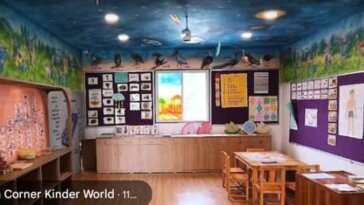Play-based learning is a fundamental approach in early years education that emphasizes the role of play in children’s cognitive, social, and emotional development. Research consistently shows that children learn best when they are actively engaged and enjoying themselves. Play-based learning allows children to explore their environment, solve problems, and develop critical thinking skills in a natural and enjoyable way.
Why Play-Based Learning Matters
In the early years, children are naturally curious and eager to explore the world around them. Play-based learning taps into this innate curiosity and channels it into meaningful educational experiences. According to the National Association for the Education of Young Children (NAEYC), play is essential for healthy brain development. It provides a safe and nurturing environment where children can experiment, discover, and learn.
Cognitive Benefits
Through play, children develop important cognitive skills. For example, a simple block-building activity can teach basic math concepts such as counting, sorting, and recognizing patterns. When children engage in imaginative play, they use symbolic thinking, which is a critical precursor to literacy and numeracy. Pretend play also enhances language skills as children create narratives, negotiate roles, and communicate with peers.
In a classroom setting, teachers can observe children during play to assess their understanding and identify areas where additional support may be needed. For instance, if a child struggles with sorting objects by color, the teacher can introduce games that reinforce this skill in a playful context.
Social-Emotional Benefits
Play-based learning also fosters social-emotional development. Children learn to interact with others, share, negotiate, and resolve conflicts—skills that are essential for building positive relationships. Group play activities encourage cooperation and teamwork, helping children develop empathy and understanding.
Consider a classroom where children are playing a game of “store.” They take on different roles—cashier, customer, stocker—and must work together to keep the store running smoothly. Through this activity, they practice communication, turn-taking, and problem-solving.
Physical Benefits
Physical development is another crucial aspect of play-based learning. Activities that involve running, jumping, climbing, and other physical movements help children develop gross motor skills. Fine motor skills are honed through activities such as drawing, cutting with scissors, and manipulating small objects.
In a preschool setting, teachers can set up an obstacle course with various challenges that require children to use their bodies in different ways. This not only promotes physical development but also encourages perseverance and resilience as children try, fail, and try again.
Implementing Play-Based Learning
To effectively implement play-based learning, educators need to create a rich and stimulating environment filled with diverse materials and opportunities for exploration. Here are some strategies:
-
Diverse Learning Centers: Set up different areas in the classroom dedicated to various types of play. For example, a reading nook, a construction area, a sensory table, and a dramatic play corner. Each center should have materials that encourage exploration and creativity.
-
Open-Ended Materials: Provide materials that can be used in multiple ways, such as blocks, art supplies, and natural objects like rocks and shells. Open-ended materials encourage children to use their imagination and think critically.
-
Outdoor Play: Incorporate outdoor play into the daily routine. Outdoor environments offer unique opportunities for exploration and physical activity. Activities such as nature walks, gardening, and outdoor games can enhance learning.
-
Teacher Facilitation: While play should be child-directed, teachers play a crucial role in facilitating learning. They can observe and interact with children, asking open-ended questions to extend their thinking. For example, during a block-building activity, a teacher might ask, “What do you think will happen if you add another block on top?”
-
Documentation and Reflection: Documenting children’s play through photos, videos, and anecdotal notes can help teachers assess development and plan future activities. Reflecting on these observations allows teachers to tailor their approach to meet the needs of each child.
Case Study: Play-Based Learning in Action
At Scottish Corner Kinder World, play-based learning is at the heart of the curriculum. One successful initiative is the “Exploration Stations” activity, designed to encourage children to explore and engage with different materials.
Objective: To foster curiosity, fine motor skills, and sensory development through hands-on exploration.
Description: The classroom is set up with different themed stations, each offering a variety of materials and activities. For example:
- A sensory station with sand and water play.
- A nature station with leaves and rocks for sorting.
- A creative station with playdough and art supplies.
Implementation:
- Children rotate between stations, spending a set amount of time at each one.
- They are encouraged to experiment, ask questions, and interact with the materials in creative ways.
- Teachers observe and interact with students, asking open-ended questions to trigger prompt thinking and reflection.
Outcome: This activity promotes active learning by allowing children to learn through exploration and play, building their understanding of the world around them. Teachers noted increased engagement and enthusiasm, with children demonstrating a greater willingness to explore, ask questions, and collaborate with peers.
Conclusion
Play-based learning is a powerful approach that nurtures children’s development across multiple domains. By creating environments that encourage exploration and creativity, educators can help children develop essential skills that will serve them throughout their lives. Join our expert panel to delve deeper into the strategies and benefits of play-based learning in early childhood education.











Play-based learning is essential as it fosters creativity, critical thinking, and social skills in young children. Through play, kids explore, experiment, and understand the world around them, making learning enjoyable and effective. This approach supports holistic development and prepares children for future academic and life challenges.
Absolutely.